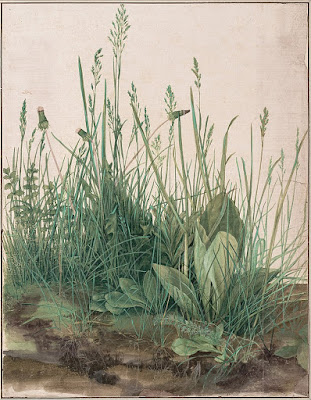
“Rockbound coast of Maine,” 8X6 demonstration painting, oil on canvasboard, Carol L. Douglas
One of my workshop students was seriously injured in a car accident last year. Because of this, I’m trying to limit our rock climbing. Plein air painting is hard enough without physical or spatial problems.
With this in mind I encouraged her to paint from just below the parking lot at Schoodic Point. She set up her pastels, did a quick value sketch and immediately moved to color. She’s an excellent composer and her start was fantastic.

Cecilia Chang’s painting of Schoodic Point.
The air was perfectly still when we started painting. Unfortunately, neither she nor I thought to weigh down her
Heilman pastel box. The wind rose imperceptibly. Whitecaps began to form and bigger breakers crashed along the rocks.
Lynne’s entire kit flew over onto the rocks with a terrible crash.
If you’ve worked in pastels, you know that the tinkle of broken chalks is the saddest sound known to mankind. An open-stock pastel stick can range from $3.50 to $7.00, and a good pastel artist can carry more than a hundred of them, accumulated over decades and treasured. The proper response to a fallen easel is either copious swearing or copious tears, depending on your personality.

The scene of the crime.
Instead, we squared our shoulders and set to work cleaning up the mess. Miraculously, the box itself wasn’t damaged by the crash. Neither were the
Terry Ludwig soft pastels she was carrying. While some of the other brands came from dust and to dust returned, these chalks were unfazed. A soft pastel that can survive the granite of Maine is not to be sneezed at.
On the first day of a workshop my students are usually so gung-ho that I have to drag them away for breaks. This year was no exception. By 1 PM, I was begging them to pack up their easels and eat their lunches. Our situation was untenable. The wind, at around 20 MPH, made the easels vibrate and the work snap around like tacking sails.

Lynne Vokatis’ unfinished pastel of Schoodic Point.
We moved to Arey Cove, which gave us a little protection. There I did a demo while my students ate their lunch.
At 5:30 I told everyone to pack up, as we had half an hour before dinner was served. Lynne was covered in pastel dust. “I think I’d better shower,” she said, and rushed through her packing. Unfortunately, the back door of her SUV wasn’t secured. As she sped around the corner, her art supplies flew out of the back, including her Heilman pastel box on its tripod.
Again, we squared our shoulders. Again we picked up the mess. Again, that box was completely unscathed.
So consider this an endorsement of the Heilman pastel box. Apparently it is indestructible. The same might be said of Lynne. Lesser women (like me) would have cried and quit for the day. But she didn’t let disaster derail her. She told me that her neurologist says to think of such moments as clouds that will shortly move along. Sounds like brilliant advice to me.

Corinne Avery’s unfinished painting of Schoodic Point.
I am participating in two events this coming weekend:
Saturday: 9 AM to 4 PM
Sunday: 9 AM to 4 PM
Paintings of coastal Maine, Aldermere Farms, and the Rockport area are featured in this event, which is free and open to the public. The farmhouse is located at 20 Russell Avenue, Rockport.
Sunday, starting at 4 PM
Thirty juried artists will paint along the Weskeag River and Marsh and St. Georges River. The party starts on Sunday with an elegant cocktail reception at 4pm. At 5 PM dueling auctioneers Bruce Gamage and Kaja Veilleux will sell the work
Tickets are $40 in advance for GRLT members/$50 for non-members and day of auction. For more information, call 207-594-5166.








































